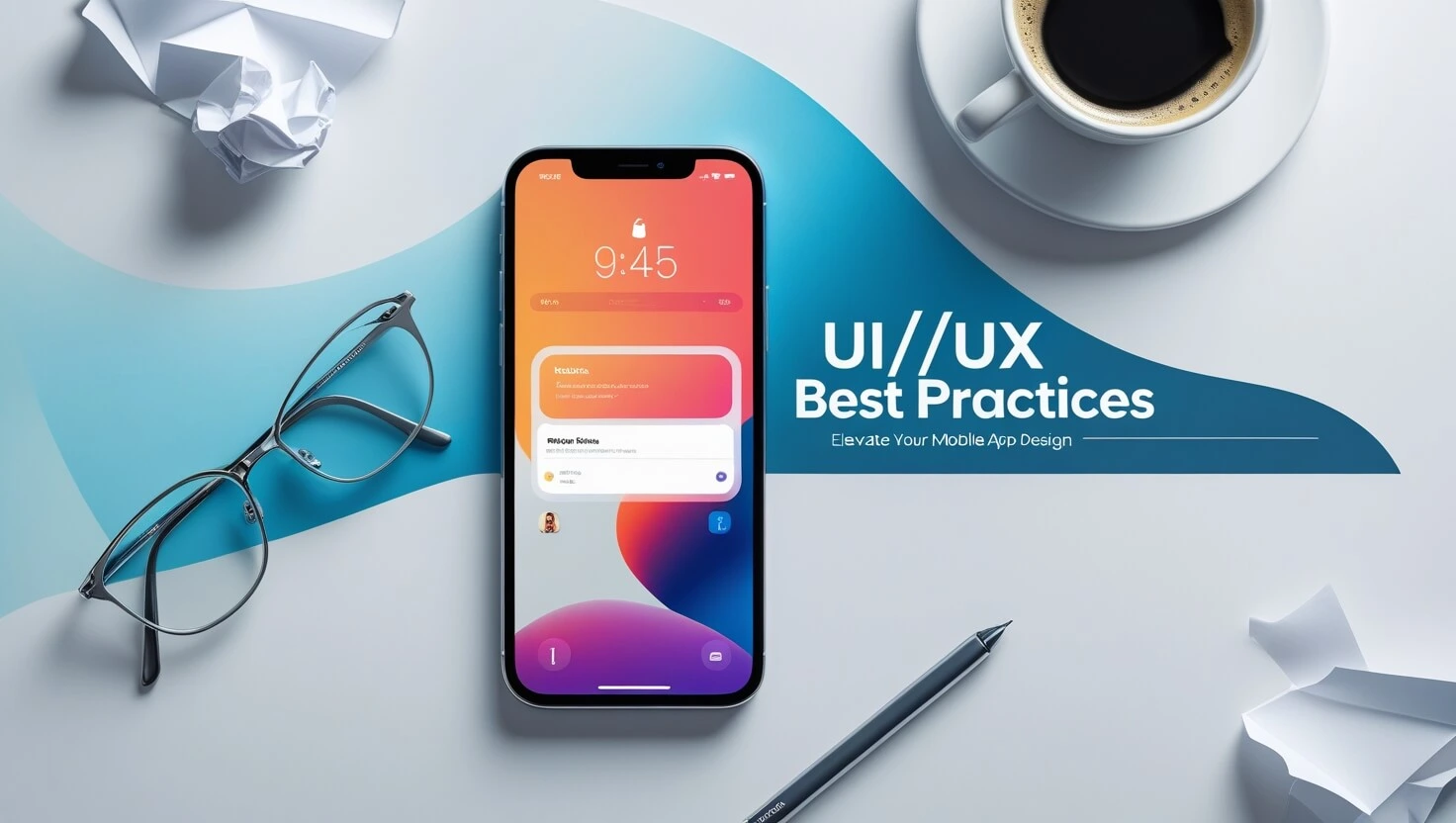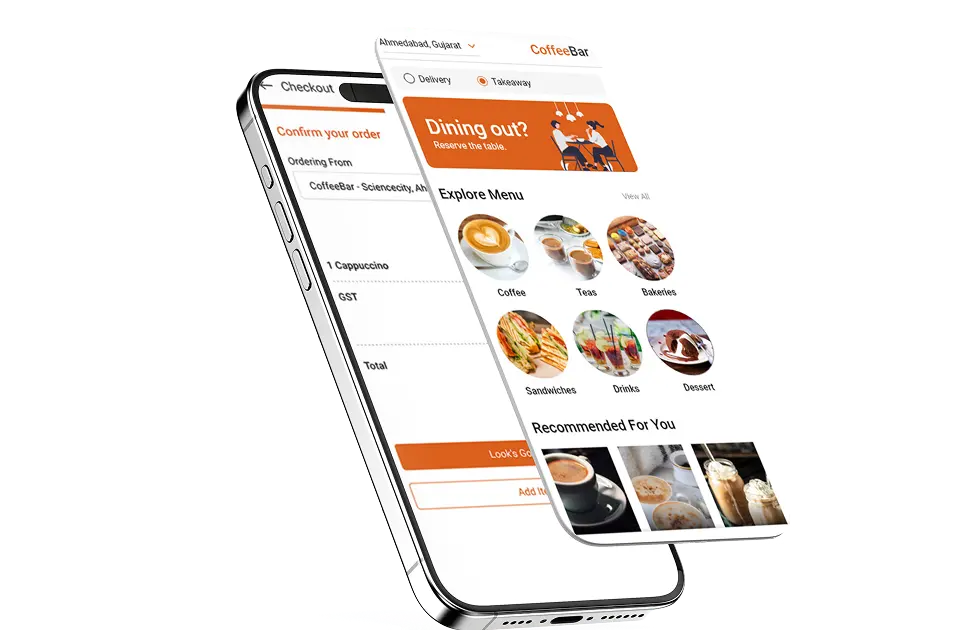Introduction
A well designed mobile app is more than just visually appealing it ensures smooth navigation, enhances user engagement, and improves overall satisfaction. User Interface (UI) focuses on the look and feel of the app, while User Experience (UX) ensures seamless interaction and usability.
In this blog, we’ll explore the best UI/UX design practices that make mobile apps intuitive, engaging, and user-friendly.
1. Prioritize a User Centric Approach
Your app’s design should revolve around users understanding their needs, behaviors, and expectations.
- Conduct User Research :- Identify target users and their pain points.
- Create User Personas :- Represent different types of users for better design insights.
- Design for Accessibility :- Ensure usability for all, including those with disabilities.
Best Tools for UX Research
- Google Analytics (User behavior tracking)
- Hotjar (Heatmaps & session recordings)
- UserTesting (Real user feedback)
2. Keep It Simple and Intuitive
Simplicity is key to a great user experience. Overcomplicated UI frustrates users and leads to higher bounce rates.
- Follow Minimalistic Design :- Use clean layouts with essential elements only.
- Use Familiar UI Patterns :- Buttons, icons, and gestures should be industry standard (e.g., hamburger menu, swipe navigation).
- Reduce Cognitive Load :- Avoid overwhelming users with too many options at once.
Example:
Instead of multiple buttons, use a floating action button (FAB) for primary actions.
Best UI Design Tools
- Figma (UI/UX design & prototyping)
- Adobe XD (Wireframing & interactive prototypes)
- Sketch (Vector-based design)
3. Optimize Navigation & Information Architecture
Users should find what they need effortlessly within the app.
- Use Bottom Navigation :- Makes it easy for users to switch between major sections.
- Maintain Consistency :- Keep navigation elements in fixed positions.
- Provide Clear Hierarchy :- Categorize content for a structured flow.
Example:
E-commerce apps should have clearly defined categories, filters, and search functions for better product discovery.
4. Responsive & Adaptive Design
Your app should look and perform well across different screen sizes and devices.
- Implement a Responsive Layout :- Adjust UI elements dynamically based on screen size.
- Optimize for Different Orientations :- Support both portrait & landscape modes.
- Use Scalable UI Elements :- Avoid fixed-size buttons or text that might appear too small on large screens.
Best Frameworks for Responsive UI
- Flutter (Cross-platform UI development)
- React Native (Adaptive UI components)
5. Focus on Speed & Performance
A slow app kills engagement. Users expect fast, seamless interactions without lag.
- Optimize Image & Video Assets :- Compress images without losing quality (use WebP format).
- Reduce Unnecessary Animations :- Keep transitions smooth but not excessive.
- Use Lazy Loading :- Load content as needed instead of all at once.
Best Performance Optimization Tools
- Lighthouse (Performance audits)
- Firebase Performance Monitoring
6. Implement Engaging Microinteractions
Microinteractions enhance UX by providing instant feedback to user actions.
- Button Click Animations :- A slight bounce effect on button taps.
- Loading Indicators :- Keep users engaged while data loads.
- Success/Error Messages :- Provide clear visual cues when actions are completed or fail.
Example:
Instagram uses heart animations when you like a post.
Best Tools for Animations & Microinteractions
- Lottie (Lightweight animations)
- Framer (Interactive UI prototypes)
7. Enhance App Accessibility
Ensure your app is usable for people with disabilities by following WCAG (Web Content Accessibility Guidelines).
- Text Contrast & Readability :- Use high contrast and legible font sizes.
- Voice & Gesture Controls :- Support voice commands for better accessibility.
- Alt Text for Images :- Helps visually impaired users understand content.
Best Accessibility Testing Tools
- Google Accessibility Scanner
- Axe Accessibility Checker
8. Personalization & AI-Driven UX
Modern apps leverage AI-powered personalization for a more tailored user experience.
- Dynamic UI Adjustments :- Change content based on user behavior.
- Smart Recommendations :- AI-driven content suggestions (e.g., Netflix’s recommendation system).
- Dark Mode & Theme Customization :- Allow users to personalize the app’s look.
Best AI-Based Personalization Tools
- Firebase Predictions (User behavior analysis)
- Appcues (User engagement & onboarding)
9. Intuitive Onboarding Process
A good onboarding experience helps users understand your app without confusion.
- Use Interactive Walkthroughs :- Guide users step by step.
- Keep it Short & Engaging :- Highlight key features without overwhelming users.
- Offer ‘Skip’ Option :- Let users explore the app at their own pace.
Example:
Duolingo uses interactive onboarding to personalize the learning experience.
10. Collect User Feedback & Iterate
Design is an ongoing process. Regular updates based on user feedback ensure continuous improvement.
- Collect In-App Feedback :- Use surveys & feedback forms.
- Analyze User Behavior :- Use analytics tools to track app engagement.
- A/B Testing :- Experiment with different UI layouts to determine what works best.
Best Tools for User Feedback & Testing
- Google Firebase Analytics
- Hotjar (User session tracking)
Conclusion
A successful mobile app blends aesthetics with usability. By following UI/UX best practices, you can create an engaging, intuitive, and user friendly experience.
Want your mobile app to stand out? Start implementing these UI/UX strategies today!


